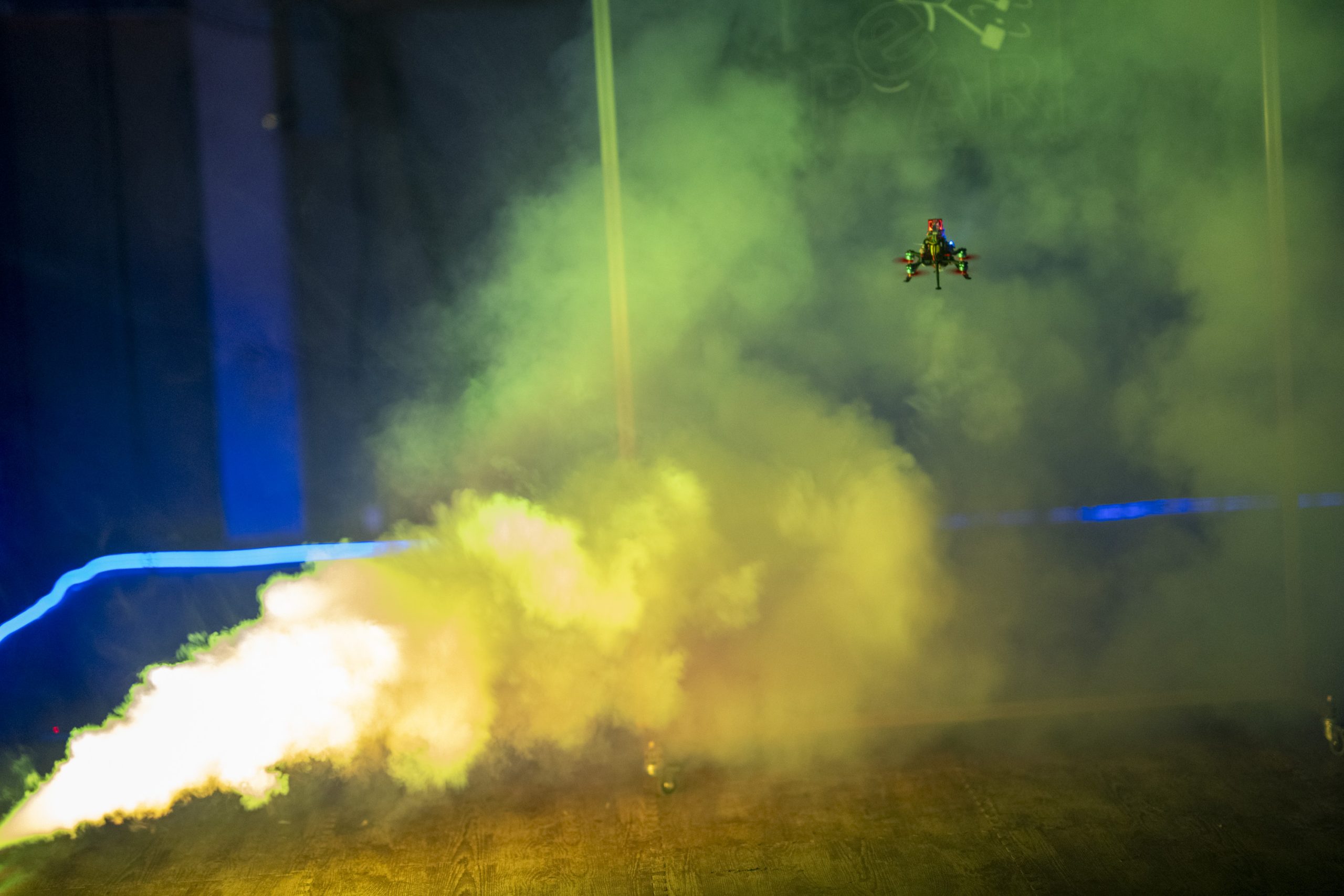
In the face of catastrophic events or complex environmental hazards, the inherent dangers of traditional search and rescue (SAR) operations frequently place human responders in perilous situations. From collapsed structures and dense smoke to treacherous terrain and extreme weather, these environments demand innovative solutions that can penetrate inaccessible areas without risking human life. Pioneering this next generation of autonomous reconnaissance, researchers at Worcester Polytechnic Institute (WPI) are developing an unconventional class of flying robots, drawing profound inspiration from one of nature’s most adept navigators: the bat.
The Imperative for Autonomous Search and Rescue
Conventional search and rescue methodologies, while invaluable, often involve significant risk to the brave individuals who volunteer or are employed for these missions. Human teams, often supported by specialized K9 units, navigate unstable landscapes, battle adverse weather, and endure conditions like low visibility or toxic atmospheres. These scenarios not only impede their progress but also expose them to injury, exhaustion, or worse. The advent of unmanned aerial vehicles (UAVs), commonly known as drones, has already begun to revolutionize SAR efforts, offering aerial perspectives, rapid deployment, and access to areas too dangerous or difficult for ground teams. However, even conventional drones face limitations in cluttered, GPS-denied, or extremely low-visibility environments where their optical sensors and navigation systems struggle. This critical gap underscores the necessity for more robust, biologically inspired robotic systems.
Biomimicry: Nature’s Blueprint for Innovation
The concept of biomimicry, or biomimetics, involves drawing inspiration from nature’s designs and processes to solve human problems. It’s a field that has gained significant traction across engineering disciplines, recognizing that billions of years of evolution have produced highly optimized solutions to complex challenges. From Leonardo da Vinci’s early sketches of flying machines inspired by birds to modern advancements like Velcro (modeled after burrs), high-speed trains designed to mimic kingfisher beaks for aerodynamic efficiency, and self-cleaning surfaces inspired by lotus leaves, biomimicry offers a powerful paradigm for innovation.
In robotics, this approach is particularly potent. Biological organisms often exhibit unparalleled agility, efficiency, and adaptability within their respective niches, often with minimal energy consumption and sophisticated sensory systems that surpass current artificial counterparts. Nitin J. Sanket, a professor at WPI, has become a prominent figure in this domain, driven by a deep conviction that biology holds the key to developing truly resilient and capable autonomous systems. His work embodies the philosophical shift from purely engineering-driven solutions to a more holistic, nature-informed scientific inquiry.
Echolocation: A Bat’s Superpower, a Robot’s Vision
At the core of Professor Sanket’s bat-inspired robots lies the principle of echolocation. Bats, renowned for their nocturnal navigation, emit high-frequency sound waves (ultrasound) and interpret the echoes that return from their surroundings. This sophisticated biological sonar allows them to construct detailed mental maps of their environment, detect obstacles, locate prey, and avoid collisions with remarkable precision, even in absolute darkness. This sensory modality offers a significant advantage over traditional optical sensors, which are rendered ineffective by smoke, dust, fog, or complete darkness – precisely the conditions often encountered in critical SAR scenarios.
Professor Sanket and his team have developed diminutive flying robots, compact enough to rest in the palm of a hand, specifically designed to replicate this ultrasonic navigation. These prototypes integrate advanced artificial intelligence (AI) software to meticulously filter extraneous noise from the incoming ultrasound signals, enabling them to identify obstacles within a two-meter radius. This AI-driven signal processing is crucial, as environmental factors and the robot’s own mechanical operations can introduce significant interference, mirroring the complex auditory challenges bats overcome in their natural habitats.
From Concept to Prototype: Overcoming Engineering Challenges
Professor Sanket’s journey into biomimetic robotics began during his doctoral studies, where a challenge to create the smallest possible robot ignited his fascination with drawing design cues from the natural world. He recognized that insects and birds perform incredible feats of flight and navigation with comparatively limited computational power and less sophisticated sensory apparatus than humans, yet achieve extraordinary agility. His initial explorations included a prototype robotic beehive for pollination, an ambitious "moonshot" that, while technically intriguing, underscored the need for applications with more immediate, real-world impact. This pragmatic shift led him to focus on search and rescue.
The development of the bat-inspired SAR robots presented a unique set of engineering hurdles. Miniaturization was paramount; the robots needed to be small, lightweight, and energy-efficient to operate effectively in confined spaces and for extended durations. Equipping such small devices with the necessary sensors and flight technology without increasing their size, cost, or power consumption proved to be a formidable task. The team ingeniously turned to commercially available, low-power ultrasound sensors commonly found in automatic faucets, a choice that significantly reduced energy demands.
However, this innovative solution quickly revealed a new challenge: the noise generated by the robots’ propellers interfered with the delicate ultrasound sensors, effectively jamming their ability to detect obstacles. Once again, the researchers looked to their biological muse. Bats possess specialized tissues in their noses, ears, and mouths that adaptively modify their thickness and density, allowing them to modulate both the emission and reception of sound. Inspired by this natural marvel, Sanket’s team engineered a 3D-printed structure designed to be placed in front of the robot’s sensors. This structure functionally mimics the bat’s ability to shape and filter sound, effectively mitigating the propeller noise and restoring the sensor’s accuracy. This elegant solution highlights the power of biomimicry not just in replicating biological functions, but in adapting them to overcome specific engineering limitations. With the fundamental navigation challenges largely addressed, the next critical objective for the team is to significantly enhance the robots’ operational speed, allowing for more rapid and efficient coverage of search areas.
The Future of Search and Rescue: Impact and Potential
The successful development of these bat-inspired robots holds profound implications for the future of search and rescue operations. Foremost is the enhanced safety for human first responders, who can be kept out of immediate harm’s way while these autonomous agents explore hazardous zones. The ability of these robots to navigate complex, low-visibility environments could drastically reduce the time it takes to locate survivors, a critical factor where every minute can mean the difference between life and death. This accelerated response could have a significant social impact, offering quicker relief and hope to affected communities and families.
Beyond immediate disaster response, the potential applications for such biomimetic, echolocating robots extend into various sectors. Imagine tiny autonomous systems inspecting the structural integrity of bridges, pipelines, or nuclear facilities in conditions unsafe for human access. They could be deployed for environmental monitoring in dense forests or subterranean networks, or even for logistical tasks in highly cluttered warehouses. The market for specialized inspection and reconnaissance robots is substantial and growing, driven by demands for improved safety, efficiency, and data collection in challenging environments. The ability of these robots to operate in GPS-denied, optically compromised spaces also makes them attractive for defense and security applications, offering covert surveillance and exploration capabilities.
Broader Implications and the Path Forward
The work being conducted at WPI by Professor Sanket and his team represents more than just a technological advancement; it signifies a broader philosophical shift in how humanity approaches engineering challenges. It champions the idea that the most ingenious solutions often reside not in purely human invention, but in the observation and adaptation of natural systems refined over millennia. This perspective encourages scientists and engineers to transcend conventional disciplinary boundaries, fostering interdisciplinary collaboration between robotics, biology, computer science, and material science.
While promising, the path forward involves continued research and development. Enhancing speed, extending battery life, increasing operational range, and developing robust swarm intelligence for cooperative mapping and searching are all critical areas for future work. The ethical considerations surrounding autonomous systems, particularly in sensitive contexts like disaster response, will also need careful consideration, ensuring transparency, accountability, and human oversight. Ultimately, these bat-inspired robots offer a compelling vision for a future where technology, informed by nature’s wisdom, can serve as a powerful force for good, protecting human lives and expanding our capabilities in the most challenging of circumstances.





